#greek wedding
Text
Mamma Mia! (2008)
👰♀️🏝️🎶
Based on the smash hit Broadway stage musical, this jukebox musical film tells the story of a young bride-to-be who, in the hopes of finding her father, invites three men from her mother’s carefree past to attend her wedding.
An extraordinary ensemble cast includes: Meryl Streep as single mother/hotel owner/former lead singer Donna Sheridan, Amanda Seyfried as sunny soon-to-be-wed Sophie Sheridan, Pierce Brosnan as possible father number one/Irish-American architect Sam Carmichael, Stellan Skarsgård as possible father number two/Swedish travel writer Bill Anderson, Colin Firth as possible father number three/British banker Harry Bright, Dominic Cooper as Sophie’s fiancé Sky, Julie Walters as former backup singer/successful author Rosie Mulligan and Christine Baranski as former backup singer/wealthy divorcée Tanya Chesham-Leigh.
Meryl Streep is a miraculous talent that has it all: star power, exuberance and a singing voice that literally strikes a chord directly in the hearts and minds of fans and audiences. Amanda Seyfried is not just a shining star, but she’s got an angelic voice that exudes charm and potential. Together, Streep and Seyfried form a delightful onscreen dynamic between mother and daughter. Both actresses are backed by a trio of diverse actors who have basically played James Bond (Brosnan), King George VI (Firth) and MCU’s Dr. Eric Selvig (Skarsgård), respectively. What’s more, Julie Walters and Christine Baranski are a pair of excellent female troupers who add wisecracks and class to the mix.
The story takes place on a fictional island in Greece, which in turn reflects a vibrant society complemented by a picturesque backdrop. It is that particular setting where its inhabitants are engrossed in the idea of finding someone to share their lives with.
Throughout the course of the film, a string of budding romances start to develop, though not without its share of chaos. As such, a dumbfounded Donna struggles to reconcile her past affairs, while Sophie in turn struggles to identify her real father.
This particular musical (both the film and stage adaptation) is built around a selection of songs from Swedish pop supergroup ABBA. The track list includes: “I Have a Dream”, “Honey, Honey”, “Money, Money, Money”, “Chiquitita”, “Dancing Queen”, “Our Last Summer”, “Lay All Your Love on Me”, “Super Trouper”, “Gimme! Gimme! Gimme!”, “Voulez-Vous”, “SOS”, “Does Your Mother Know”, “Slipping Through My Fingers”, “The Winner Takes It All” (sung to perfection in an arresting performance by Meryl Streep), “When All Is Said and Done”, “Take a Chance on Me”, “Waterloo” and, of course, “Mamma Mia”. These songs not only exemplify the uninhibited quality of the story, but have left an indelible mark on the entertainment industry.
Lastly, the overall essence of Mamma Mia! is to embrace uncertainty as it is possible to define yourself without full knowledge of parentage. All in all, I recommend this upbeat, feel-good jukebox musical to every lover (and hater) of ABBA.
#mamma mia 2008#jukebox musical#ABBA#meryl streep#donna sheridan#amanda seyfried#sophie sheridan#pierce brosnan#Sam Carmichael#stellan skarsgard#bill anderson#colin firth#harry bright#Julie Walters#christine baranski#Donna and the Dynamos#Greek wedding#Kalokairi
8 notes
·
View notes
Photo
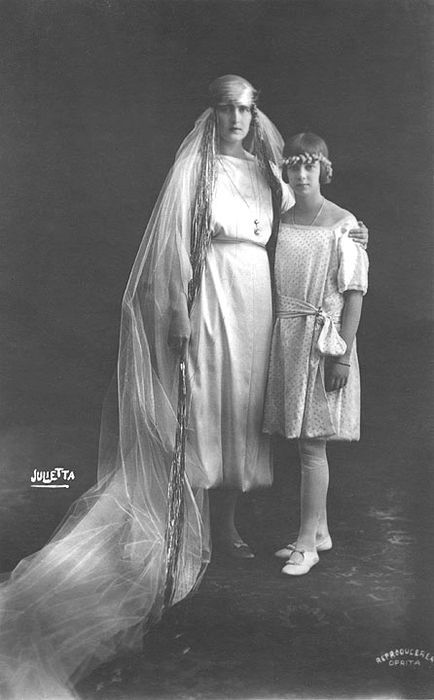
✵ February 27, 1921 ✵
Princess Elisabeth of Romania & Prince George of Greece and Denmark, Crown Prince of Greece
Later King and Queen of Greece
14 notes
·
View notes
Text
Opa!
My Big SuperWonder Wedding
#superwonder#smww4ever#superman#supermanwonderwoman#wonderwoman#truelove#superman wonderwoman#lovebirds#powercouple#supermanxwonderwoman#Greek wedding
6 notes
·
View notes
Text

July 2023: Thessaloniki, Greece
#Thessaloniki#Greece#Thessaloniki Greece#Summer#Bay#Port#Beach#Sunset#Summer evening#Greek evening#Greek wedding#Les Zazous
3 notes
·
View notes
Text
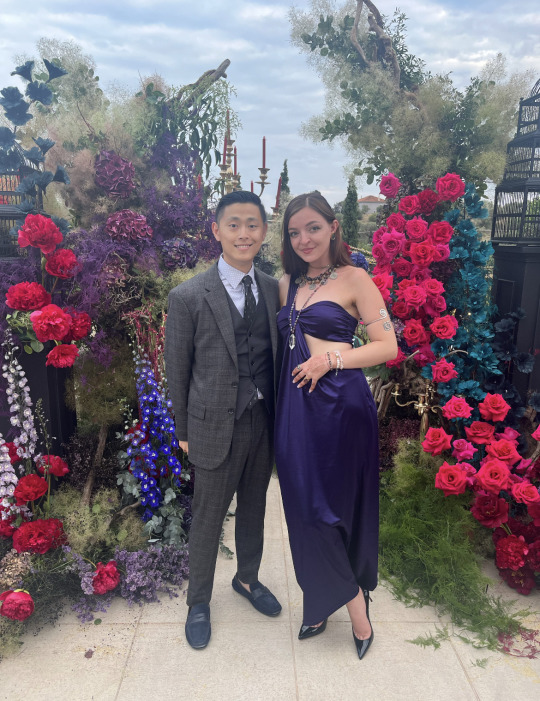
4 notes
·
View notes
Text
Would you be mad if this happened to your wedding??
Thanks to our member for sharing @nancynaziri_official
#Greece #Greek #GreekWedding
17 notes
·
View notes
Text
Ξέρεις ότι δεν είναι η ώρα σου να παντρευτεις οταν βλέπεις την ανθοδεσμη που πετάει η νυφη να έρχεται κατά πάνω σου και κανεις στην άκρη αντί να την πιασεις 😂
3 notes
·
View notes
Text
A CALL TO ANY GREEK HISTORICAL CLOTHING EXPERT
What did Greek grooms and brides wear for their wedding ceremony in 1700?
If you have pictures, ALL THE BETTER!
THANKS 🙏🏻💗
#greek wedding#greek bride#greek groom#greek wedding ceremony#greek clothing#1700#1700s#18th century
0 notes
Text
My Big Fat Greek Wedding 3: A Heartwarming Return to the Portokalos Family
Join the Portokalos family on their heartwarming journey to Greece in My Big Fat Greek Wedding 3, where laughter, love, and stunning locations await.
Introduction:
In 2002, “My Big Fat Greek Wedding” became a massive hit, capturing our hearts with its charming portrayal of the quirky Portokalos family and their deep love for one another. Fast forward to 2023, and we’re eagerly anticipating the release of “My Big Fat Greek Wedding 3,” the latest chapter in this beloved series.
Introduction: The Magic of the Portokalos Family: Sequels That…

View On WordPress
#Escapist Movies#Family Comedy#Greece#Greek Culture#Greek Wedding#Heartwarming Films#My Big Fat Greek Wedding 3#Portokalos Family#Sequels
0 notes
Photo

my personal favourites hehe
#star wars#fanart#my art#the mandalorian#boba fett#grogu#rey#poe dameron#finn star wars#din djarin#luke skywalker#my fav is when the jedi order is like... some business conglomerate#or that one fic where mandelorians were just an extended family of greek people based on my big fat greek wedding#srry if this is hard to read i rlly dont care
7K notes
·
View notes
Text






My Big Fat Greek Wedding (2002) Dir. Joel Zwick
#filmedit#my big fat greek wedding#userbbelcher#chewieblog#fyeahmovies#usersavana#userashe#usermorgan#usergiu#userhugh#userjack#usergiles#userraffa#tuserhan#usersugar#tusertha#by adie#*#comedy#romance#2000s
1K notes
·
View notes
Photo
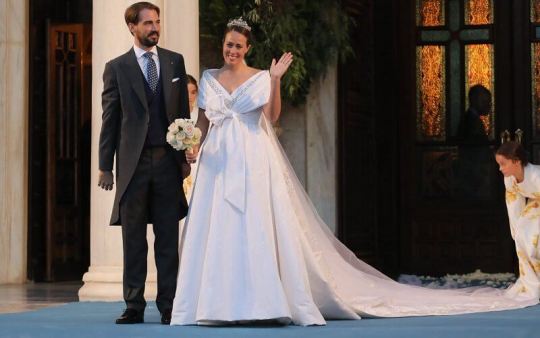
✵ October 23, 2021 ✵
Nina Flohr and Prince Philippos of Greece
13 notes
·
View notes
Text
Dissecting ancient Greek wedding customs (or “How to adapt the clusterfuck they are into something somewhat doable for the 21st century”)
This post is going to be a bit different. I could stick to writing about the customs we know of from a purely historical perspective, and while it would be informative, it wouldn’t reflect what I’ve actually been up to. Some of you might already know, but I’m getting married, so I approached this topic with the intent of seeing what I could do (and get away with).
So this post is going to be more about method and the practical challenges that come with doing the groundwork of adapting very old (and often outdated) traditions in a way that makes sense for our modern times.
I do have some disclaimers to make before I get started:
Most (if not all) of the literature around ancient Greek marriage is hetero-normative. However, this does NOT mean that marriage rites shouldn’t be adapted for queer marriages or that queer marriages can’t be done within Hellenic paganism. It’s our job as reconstructionists and revivalists to rework and adapt to our needs.
Similarly, this post is bound to mention or detail cult practices that are no longer in line with our modern sensibilities. I also want to make it clear that this post is not a tutorial. I’m not saying how things should be done, I’m only exposing elements that I consider reworkable and propose suggestions so that it can help others make their own research and decisions, with the level of historicity that they deem fit.
While the wedding customs from fifth century BC Athens are decently known, the ones from other cities and regions of Greece are much more obscure outside of anecdotal and fragmentary details (with the exception of Sparta). For this reason, the Athenian example is what I’ll be using as foundation. If you reconstruct practices from other areas of the Greek World, you might find something valuable in this article: The Greek Wedding Outside of Athens and Sparta: The Evidence from Ancient Texts by Katia Margariti.
Basic/simplified structure
The typical Athenian wedding would spread over three days, and be marked by several steps, some of which are listed below. Note that the order of these steps is not precisely known and might have been flexible:
Pre-wedding:
Decorating: korythale at the door, decoration of the nuptial bedroom
The Proteleia
Filling of the loutrophoros
Wedding day
Nuptial bath
Adornment of the bride
Wedding Feast
Hymenaios
Anakalypteria
Nymphagogia
Katachysmata
Day after
Epaulia
Gamelia
Final sacrifices
Some of these steps included specific customs and traditions, not all of which are reconstructible for various reasons.
Decorations
The korythale: the korythale was a sprig, usually from an olive tree (or laurel), which was placed at the groom’s door (and perhaps the bride’s too). The word in interpreted as deriving from “koros” and “thallein”, which would translate “youth-blossom”.
The korythale is very reminiscent of the eiresione, which was a similar kind of branch of laurel used during the Thargelia and/or the Pyanepsia that had apotropaic purposes. Athenian weddings included a procession from the bride’s home to the groom’s house, so the presence of the korythale at the doors would indicate that a wedding was taking place involving the decorated homes.
While I haven’t seen any one make this interpretation, I would still be tempted to argue that decorating the thresholds of houses has a similar protective and luck-bringing purpose than the eiresione, which was also hung above the door of Athenian houses.
The thalamos (nuptial bedroom): While there is no doubt the houses were properly decorated for the occasion, we have mention of special care given to the nuptial bedroom.
It’s important to understand that the procession from the bride’s house to the groom’s went up to the bedroom door, it was generally an important location and its preparation is seen represented on ancient pottery. Euripides mentions the adornment of the bed with fine fabrics, while Theocritus mentions the smell of myrrh (sacred to Aphrodite). There is also evidence that, in the Imperial period, the practice of hanging curtains to create a canopy above the bed was adopted, very likely from Egypt.
When it comes to adapting this today, it is pretty straightforward and there is plenty of room for personalization. The korythale could be challenging depending on how easily available olive or laurel are in your area. I would also argue that the custom could be more loosely adapted so that instead of being at the houses’ doors, it could take the form of a floral arrangement at the door of whatever venue you are using.
Proteleia
In short, the proteleia refers to sacrifices and offerings that would be made to various gods before the wedding. The exact timing of these is more or less unknown, but we have reasons to believe they could be done a day or a few days before the wedding, and perhaps also on the day of the wedding. These offerings were made independently by each family.
It is in this context that the offering of a lock of hair and of childhood items is best known for brides. The recipients of the offerings are varied: In Athens the most mentioned are the Nymphs and Artemis, but various sacrifices to Aphrodite, Hera, Athena and Zeus were also performed. In other parts of Greece, pre-nuptial customs often included sacrifices to local heroines. Plutarch, in the 2nd century AD (and therefore way after the focus of this post) mentions the main five nuptial deities to be Zeus Teleios, Hera Teleia, Aphrodite, Peitho and Artemis.
Today, I believe the exact choice of who to offer to and what to offer very much comes down to personal preferences and circumstances. While we assume that both families made prenuptial sacrifices, we know very little of the groom’s side of things, since the focus was on the bride, and the rite of passage aspect was not present for the groom in Ancient times. This is a gap that leaves room for modern innovation eg. including Apollon to either replace or accompany Artemis or choosing a group of deities that is more couple-centric rather than family-centric.
Personally, I have settled on Aphrodite, Hera and Artemis and have integrated a Spartan custom that includes the mother of the bride in the sacrifice to Aphrodite. Hera Teleia will receive a lock of my current hair, while Artemis will receive a lock of hair from my first haircut as a child (that my mother has kept all these years), alongside some other trinkets. The groom will honour Zeus Teleios in a passive way. And I will honour the Nymphs through the the rite I will explain next.
Nuptial baths
Both bride and groom had a ritual bath before the wedding. Its purpose was of cleansing and purificatory nature, and is consistent with other water-based pre-sacrifice purifications. What made the bride and groom's baths distinctive was their preparation. The bath water used to be drawn at a specific spring or river. At Athens, the water for bridal baths came from the Enneakrounos, the fountain house for the spring Kallirrhoe, but each city had its dedicated source. The water was carried in a special vase named the loutrophoros (bathcarrier) and the act of fetching the water and bringing it back to the homes constituted a procession. The loutrophoros was often given as offering to the altar of the Nymphs after the wedding. It was an important symbol of marriage, to the point that, if a woman died before being married, she would often be buried with a loutrophoros.
This will be more or less difficult to adapt depending on circumstances and environment, but the logic of a purifying bath (or shower even) can be kept (though I would discourage bathing in water you are not sure of the cleanliness of). The idea of having a specific vessel can also be kept. Personally, I plan to have a special vessel for some type of purified water, and while I may not bathe in it, I plan to sprinkle it and/or wash my hands with it.

Adornment of the bride (and groom)
Traditionally, the bride would have a nympheutria (which we could equate as a bridesmaid, but seems to have often been a female relative) charged of helping the bride get ready. I won’t get into the details of the clothing we know about, mostly because there seems to be a lot of variation, and because I consider this to be a very personal choice. However, we can note that both groom and bride were adorned with a wreath or a garland of plants that were considered to have powers appropriate for the occasion (sesame, mint, plants that were generally considered fertile or aphrodisiac). Perfume is also something attested for both bride and groom, especially the scent of myrrh. The bride would wear a crown, the stephane, which could be made out of metal or be vegetal (the stephane is now the object of its own crowning ceremony in Greek Orthodox weddings). The bride’s shoes were also particular for the event, and named nymphides. The bride’s veil was placed above the crown.
Hymenaios and Feast
I am grouping these two since they are linked. The feast was more or less the peak of the wedding ceremony and lively with music and dances, as Plutarch indicates (Moralia, [Quaest. conv.] 666f-67a):
But a wedding feast is given away by the loud cries of the Hymenaios and the torch and the pipes, things that Homer says are admired and watched even by women who stand at their doors.
The hymenaios was a sung hymn in honour of the couple and the wedding, and there were other songs that were specifically sung at weddings. However the hymenaios wasn’t only for the feast, these songs would be sung also during the processions. The hymenaios also had the purpose of ritually blessing the couple, a ritual that bore the name of makarismos.
As for the feast, it was obviously abundant with food and the prenuptial sacrifices provided the meat that would be served. There is otherwise very little difference with what a modern wedding feast would be like: food, drink, music and dance around which gathered friends and relatives of the couple. Like today, the wedding cake(s) was an important part of the celebration. It was called sesame and consisted of sesame seeds, ground and mixed with honey and formed into cakes to be shared with the guests.
Anakalypteria
Note that there is a bit of a debate around this step, which is the unveiling of the bride. Some believe the bride kept her face veiled until this part of the wedding, where her face would be uncovered for the groom to see. Others interpret this step the other way around, where the bride is then veiled as a result of being now married. The timing of the unveiling is also up for the debate. It might have been during the feast (at nightfall), or after once the couple was escorted to the bridal chamber. There doesn’t seem to be a clear consensus.
The concept of unveiling the bride is otherwise something that isn’t unknown to us as a modern audience. As with everything else, how to interpret and modernize it is up to personal preference.
Nymphagogia and Katachysmata
The nymphagogia aka the act of “leading the bride to her new home” took place at night, likely after the feast. It is at this point that the groom ritually led the bride to his home by taking her by the wrist in a ritual gesture known as χεῖρ’ ἐπὶ καρπῷ (cheir’ epi karpo). The relatives and friends of the couple formed a festive procession that accompanied them to their new home accompanied by music and songs. The mother of the bride led the procession carrying lit torches, while the groom’s mother awaited for the new couple in their home, also bearing lit torches.
Once there, the rite of the katachysmata would happen. The couple would be sat near the hearth and the guests would pour dried fruits, figs and nuts over the bride and groom as a way to incorporate them into the household and bless the union with prosperity and fertility. As part of this rite, the bride ate a fruit (either an apple, quince or pomegranate). It is only after this step that the couple would be escorted to the bridal chamber.
These two rites are tricky to adapt in a modern context because of how location-specific they are (and that’s not even taking into account the implications of having family escort you to your bedroom etc). My take would be that the katachysmata is not too far off from the custom of throwing rice/flowers at the couple after the ceremony, and could probably be incorporated as such. The torches could also be replaced by any source of light placed in a meaningful location, depending on the where the wedding is being held. The nymphagogia could also do with an update, the easiest of which could simply be holding hands while leaving the wedding ceremony.
The day after (Epaulia, Gamelia & sacrifice)
The epaulia refers to wedding gifts to the couple, which would be given the day following the ceremony. At this point, it is implied that the couple has consummated their marriage and are officially newly-weds. Pausanias informs us that the term “epaulia” (also?) refers to the gifts brought by the bride’s father in particular and included the dowry.
After the epaulia, the bride's incorporation into her husband's house was complete. This might have been when the groom held a feast for his phratria (aka direct family), as a way to conclude the wedding.
As for final sacrifices, the bride herself may have marked the end of her wedding by dedicating her loutrophoros at the sanctuary of Nymphe, south of the Acropolis.
The epaulia could be adapted, in modern terms, with having a registry. Should someone choose to have a specific vessel linked to the ritual bath today, it could very well be kept, dedicated to the Nymphs and used as a small shrine. Considering how symbolic the object is, there is also room for it to become a piece of family heirloom.
Final words
This is really only a small summary of what a wedding could have looked like, sprinkled with a few ideas of how to manage the gaps, discrepancies and limitations. As I said in my introductions, there are details I haven’t mentioned. Some of the customs detailed here have clear modern counterparts, but others don’t. I’d like to conclude by addressing these.
First, the ancient Greek (Athenian) wedding is completely devoid of priestly participation. It was entirely planned, organized and led by the two families. Religious responsibilities were entirely self-managed. I find this point important to remember because it makes it much more accessible than if modern Hellenic pagans had to seek out an external authority.
Some of you might have noticed the absence of wedding vows, at least in a formal form like the one we are used to in our modern days (derived from Christian and Jewish traditions), this is not an oversight, there simply were none that we know of. As a sidenote, I would also advise against turning a wedding vow into a formal oath. I’m still debating on what to do myself, but I’m leaning towards a religiously non-binding vow that won’t curse me should things go wrong.
Adapting the structures and rites of the ancient wedding to today’s framework of ceremony will naturally lead to changing the order of things, on top of sacrificing elements for the sake of simplicity, practicality, personal preferences and, very likely, visibility. Unless you’re lucky enough to do a private elopement, chances are that relatives and friends might be there, and not all might know or even approve of your faith. I hope this post shows that there can be ways to include traditional religious elements that will go unnoticed to the untrained eye, like I hope it showed that the private nature of the ancient Greek wedding rites is a significant advantage for modernization.
#hellenic polytheism#hellenic paganism#hellenic pagan#heradeity#greek history#ancient greece#zeus deity#aphrodite deity#artemis deity#hellenic reconstructionism#wedding rites
739 notes
·
View notes
Text
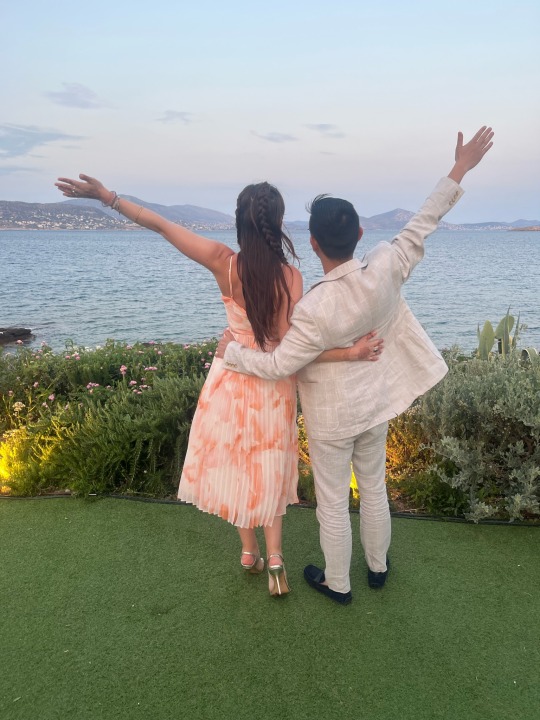


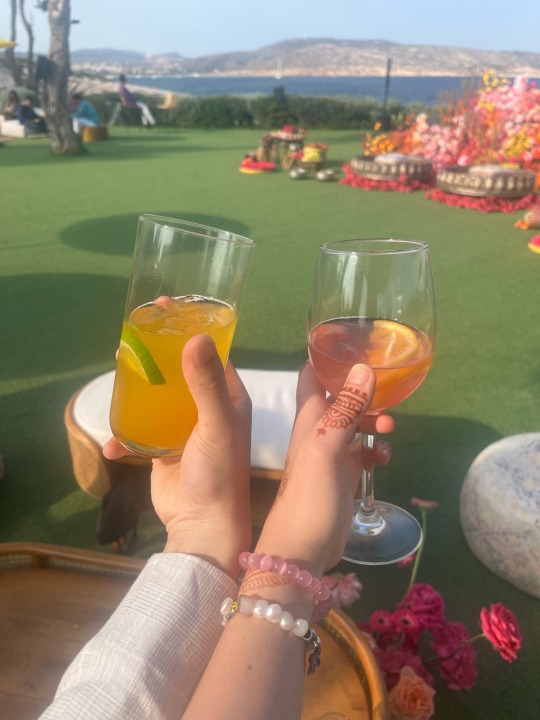
3 notes
·
View notes
Text




So glad MBFGW3 and Special Ops: Lioness made her dye her hair to this darker color. It really compliments her well.
#and the hair flip 👀#stephanie nur#aaliyah amrohi#special ops: lioness#special ops lioness#my big fat greek wedding 3#mbfgw#qamar
683 notes
·
View notes
Text
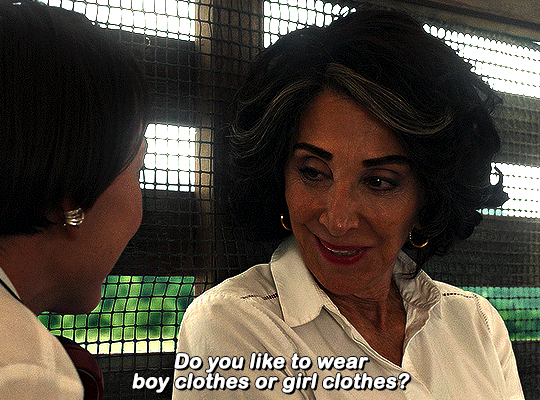





MY BIG FAT GREEK WEDDING 3 (2023) dir. Nia Vardalos
664 notes
·
View notes